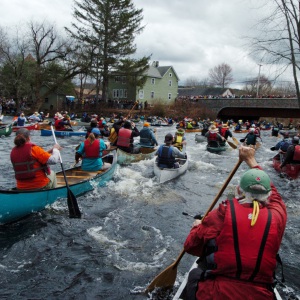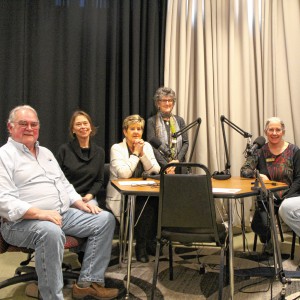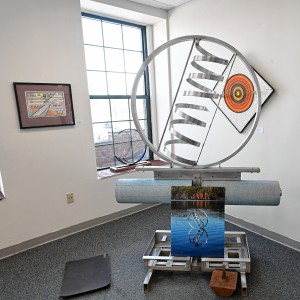After presentation on alternative sites, cell tower hearing continued in Greenfield
|
Published: 02-21-2025 5:36 PM
Modified: 02-21-2025 6:00 PM |
GREENFIELD — The Zoning Board of Appeals further continued Viridi Wireless’ presentation to request a variance and special permit to build a 170-foot cell tower near 112 Newton St. following a two-hour presentation Thursday evening.
Michael Rosen, an attorney representing Viridi Wireless, explained that AT&T wishes to install the monopole near 112 Newton St. to resolve a major gap in cellular coverage near Interstate 91. He said that in 2017, the federal government designated AT&T the carrier of FirstNet, or the First Responder Network Authority, making the company the primary provider for emergency service agencies.
“The closest [AT&T] facility is 1.5 miles away. I’m amazed that we don’t have something closer and the one after that is 3.3 miles away,” said Ed Perry, an attorney representing AT&T. “The need is obvious. You just don’t have coverage here.”
Before continuing the presentation, which will be followed by a period of public comment through April 9, representatives from AT&T and Viridi Wireless presented coverage maps of all the alternative sites surrounding the gap along Interstate 91.
Perry noted that most of the alternative sites either lacked range in coverage or proper site conditions, including a “fall zone,” in the event that the tower were to fall in an emergency.
When ZBA member Debra Gilkes noted that the coverage map for a proposed alternate site near the Hampton Inn on Shelburne Road appeared to show a broader range of coverage than that shown at 112 Newton St., Perry said the Hampton Inn location, in AT&T’s estimation, would lack coverage south of Wisdom Way on Interstate 91. He added that the maps were designed to represent the span of service for a 170-foot monopole, but that the Hampton Inn site would not be able to accommodate a tower that tall.
“If, for whatever reason, this tower were reduced to a height of 146 feet, we’re going to lose about 13% of the population coverage that we have, 16% of the business population coverage that we would get. And then if you reduce it further to 126 feet, we’ll lose a full 28% of what we’re looking to cover,” Perry said.
Referencing the 1996 Telecommunications Act, Perry addressed abutters’ concerns over the potential adverse health impacts of placing a cell tower in a residential area. He said as long as the radiation levels fall under the Federal Communications Commission’s maximum of 5%, the board could not legally deny the applicant for health concerns.
Article continues after...
Yesterday's Most Read Articles
Andrew Campanelli, an attorney representing the abutters to challenge the cell tower proposal, argued against the applicants’ maps, calling it “misinformation” that would not stand up as evidence in a court of law. He said the coverage zones shown through the map were not backed by facts gathered through a driving test, in which a recording device is attached through the car to test coverage throughout the city.
“This map does not serve as evidence of any gaps anywhere in the entire city of Greenfield. Now I’m not saying there is perfect coverage in Greenfield, but I want to prove to you right now that this map proves absolutely nothing,” Campanelli said. “All they have to do is attach a reporting device to a car and drive through the city. If and only if they provide that data to you, does it then place you, this board, in a position to determine if this tower is actually necessary.”
Anthony Cammalleri can be reached at acammalleri@recorder.com or 413-930-4429.






 Literacy Project celebrating 40 years of education
Literacy Project celebrating 40 years of education River Rat Race returns for 60th year on April 12
River Rat Race returns for 60th year on April 12 Backyard Oasis, connecting older adults with podcasts, celebrates 50 episodes
Backyard Oasis, connecting older adults with podcasts, celebrates 50 episodes Stage on Main exhibit displays Athol resident’s work through the decades
Stage on Main exhibit displays Athol resident’s work through the decades
